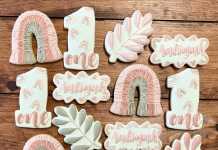Due to more environmental awareness in recent years, cloth diapering has been making a comeback. These aren’t the cloth diapers of our childhood though, the white ones that were folded and pinned in place with a needle the size of the one I got an epidural from. Those folding cloth diapers are still around, but the pins have been replaced with a much safer plastic snap, because who wants to accidentally wound their baby during a drowsy diaper change at 3 am? Not this mama! Not only have the pins been replaced with snaps, but there are now so many more options in addition to that folded flat diaper inside a plastic cover of yesteryear. Now, there are one-size-fits-all adjustable diapers, diapers with plastic covers and removable microfiber inserts (called pocket diapers), diapers with everything sewed together (called all-in-ones), plus there are sized plastic covers to put over the folded flat diapers. And now there are patterns: you can find stripes, flowers, construction equipment, and any color of the rainbow your little heart desires printed on a diaper.

9 years ago, when I first started looking into cloth diapering my first child, I didn’t know a single person who was currently cloth diapering. I read everything I could find on the internet and quickly became overwhelmed with all of the options. After reading hundreds of reviews, I finally decided upon the pocket diapers. I reasoned that I wanted to go with a one-size-for-all fit to keep things simple and reduce the number of items and pieces I needed. I also wanted to use only one brand of diapers to keep everything interchangeable and less confusing. (I had talked to one friend who had attempted to cloth diaper and she bought multiple different types of diapers and was always confused with what parts went with what cover and gave up cloth diapering, so I knew I wanted to keep things consistent.) The reason I chose pocket diapers (with removable pieces) over all-in-ones (which are similar to pocket diapers but have all the pieces sewn together so nothing comes apart) is that all-in-ones aren’t supposed to go in the dryer because it’s bad for the outer cover, they need to be line or air-dried, which takes a while since these diapers are so thick and everything is stuck together. The pocket diapers were adjustable like I wanted, and while the outer cover couldn’t go in the dryer, the inner pieces could, meaning everything could be dry within a few hours.
A few of the many reasons why I liked cloth diapering.
1. It’s environmentally friendly, less waste goes into landfills.
2. It saves $$$$.
3. By using diapers with natural fibers you are eliminating harsh chemicals on your baby’s bottom, which also reduces rashes.
4. Studies indicate that cloth diapered children tend to be quicker to potty-train because they are more able to feel the wetness against their skin as opposed to a disposable diaper.
How it all works
With each of my 3 kids, I gave myself a new mom grace period and used disposables (that were shower gifts) for the first 8 weeks. This gave me time to adjust and find my groove with each newborn without the extra laundry. It also served the purpose of allowing those cute baby legs to thicken up to fill the holes in my adjustable one-size fits all diapers.
After that period I used exclusively cloth diapers on each of my 3 kids until they were potty-trained (between 2 and 3 years old). The only exception was that I did buy disposables whenever we made a trip out of town. The bonus was that I was able to re-use diapers from the first child on the latter two, stretching the initial investment even further.
Most people who cloth diaper keep a wet bag or a bucket in their laundry room. When they take off a diaper they dump any solids (chunks of poo) into the toilet and then place the diaper (and any cloth wipes that were used) in the spot where they keep dirty diapers. I tended to more often than not just throw the diaper straight in the washing machine. I had some diapers (20 total) for which I needed to wash a load every day. If you buy more diapers you could stretch this out to every other day, but I don’t think you’d want soiled diapers sitting idle in your home for more than 2 days.
To wash, I followed the instructions that came with the diaper. Mine involved a cold rinse first. Then a hot, heavy wash with 2 Tbsp fragrance-free detergent, then a final warm rinse. Then to dry, the outer shells got laid out on top of the dryer, while the wipes and inner cloths did a normal cycle in the dryer.
(If putting soiled/poopy diapers in your washing machine is a deal-breaker for you, some services will pick up, wash, and return the diapers to you for a fee)
The extra laundry never seemed like much of a burden to me because I was home a lot anyway and starting the washing machine and dryer only took a few minutes each day.
















